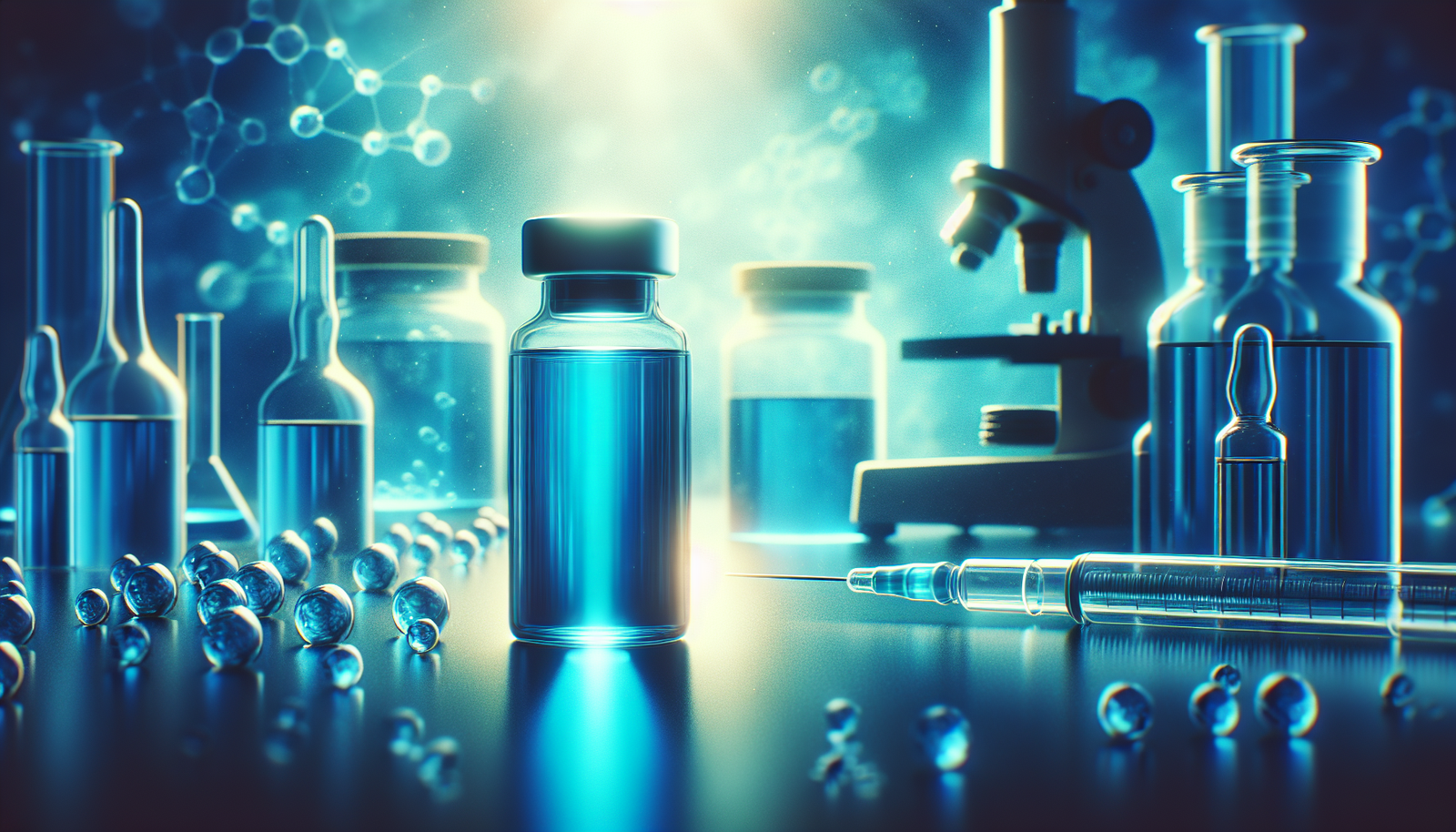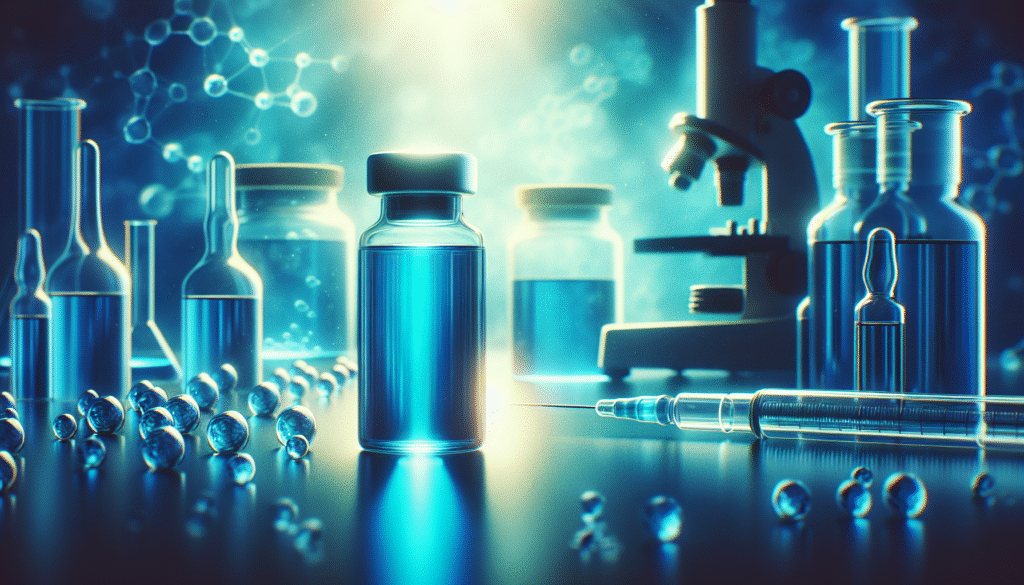
What if a compound could not only enhance your health but also play a crucial role in energy production within your cells? Methylene blue, a well-known dye, has gained attention for its potential benefits beyond its traditional uses. This article examines how methylene blue influences energy production at the cellular level, its mechanisms of action, and implications for health and performance.

Understanding Methylene Blue
Methylene blue (MB) is a synthetic dye with applications in various fields, including biology, chemistry, and medicine. Originally developed in the 19th century as a textile dye, its medicinal properties soon came to light, leading to its use as an antiseptic and treatment for a range of ailments including methemoglobinemia.
Historical Context
The history of methylene blue is fascinating, as it reflects the intersection of science and medicine. Initially synthesized in 1876, it became the first synthetic dye used to stain biological tissues. Over the years, studies have revealed its ability to interact with biological systems in significant ways, particularly in cellular respiration and energy metabolism.
Chemical Properties
As a thiazine dye, methylene blue has distinct chemical properties that contribute to its effects on biological systems. It is a cationic compound, meaning it carries a positive charge in solution, which allows it to easily cross cell membranes and interact with cellular components.
Energy Production in Cells
Understanding the role of methylene blue requires an examination of how cells produce energy, primarily through a process called cellular respiration. This complex series of biochemical reactions occurs in several stages within various organelles, primarily the mitochondria.
The Process of Cellular Respiration
Cellular respiration involves converting glucose and oxygen into adenosine triphosphate (ATP), the energy currency of the cell. The following stages outline this process:
- Glycolysis: This anaerobic pathway occurs in the cytoplasm, where glucose is broken down into pyruvate, yielding a small amount of ATP.
- Krebs Cycle: This aerobic process takes place in the mitochondria, where pyruvate undergoes further oxidation, producing electron carriers.
- Electron Transport Chain (ETC): The final stage occurs in the inner mitochondrial membrane, where electron carriers donate electrons to a series of proteins, creating a proton gradient that drives ATP synthesis through chemiosmosis.
For rich understanding, here’s a simplified version of each stage in table format:
| Stage | Location | Inputs | Outputs |
|---|---|---|---|
| Glycolysis | Cytoplasm | Glucose | 2 ATP, 2 NADH, 2 Pyruvate |
| Krebs Cycle | Mitochondria | Acetyl-CoA | 2 ATP, 6 NADH, 2 FADH2 |
| Electron Transport Chain | Inner Mitochondrial Membrane | NADH, FADH2 | 34 ATP |
Methylene Blue’s Mechanism of Action in Energy Production
Methylene blue has been shown to enhance the efficiency of cellular respiration, particularly in the context of mitochondrial function. Understanding how it operates at a biochemical level illuminates its potential benefits for energy production.
Enhancing Mitochondrial Function
Methylene blue acts as an electron carrier, shuttling electrons between complexes in the electron transport chain. This effect can increase ATP production when cellular respiration is impaired.
- Electron Donation: By accepting electrons from NADH, methylene blue can bypass dysfunctional components of the electron transport chain, allowing the process to continue. This is particularly significant in conditions where mitochondrial function is compromised, such as in aging or certain diseases.
Redox Potential
The redox potential of methylene blue allows it to act as both an oxidizing and reducing agent, facilitating redox reactions in the mitochondria. This duality can improve mitochondrial efficiency, leading to enhanced ATP synthesis.
Therapeutic Applications of Methylene Blue
The implications of methylene blue extend into various therapeutic areas, particularly regarding its role in disease states characterized by impaired energy metabolism.
Neurodegenerative Diseases
Research has indicated that methylene blue may offer neuroprotective benefits, particularly in conditions like Alzheimer’s and Parkinson’s diseases.
- Mitochondrial Dysfunction: In neurodegenerative diseases, mitochondrial dysfunction is a prominent feature. Methylene blue’s ability to enhance mitochondrial function could mitigate some of the energy deficits experienced by neurons.
Metabolic Disorders
Metabolic disorders, which often involve impaired cellular energy metabolism, could also benefit from methylene blue supplementation.
- Type 2 Diabetes: Insulin resistance can lead to dysfunctional mitochondrial behavior. Methylene blue may improve energy metabolism, potentially enhancing insulin sensitivity and overall metabolic health.
Athletic Performance
The interest in methylene blue extends to its application in enhancing athletic performance. By boosting mitochondrial efficiency, athletes might experience improvements in endurance and recovery.
- Improved Endurance: Enhanced ATP production during aerobic activity could translate to better performance and stamina.

Potential Risks and Considerations
While methylene blue shows promising benefits, it is vital to consider potential risks and side effects associated with its use, particularly in therapeutic settings.
Side Effects
Though generally considered safe in low doses, methylene blue can cause adverse reactions, including:
- Serotonin Syndrome: As a monoamine oxidase inhibitor (MAOI), methylene blue can interact with other medications, particularly antidepressants, leading to potentially life-threatening serotonin syndrome.
- Skin and Urine Discoloration: Users may notice a blue tint to their skin or urine, which, while not harmful, can be alarming.
Dosage and Administration
Determining the appropriate dosage of methylene blue requires careful consideration. Clinical studies suggest that low doses may be beneficial, but higher concentrations can have toxic effects. Always consult with a healthcare professional before using methylene blue, especially if you have underlying health conditions or are taking medication.
Future Research Directions
As the scientific community continues to investigate the role of methylene blue in various biological systems, several areas warrant further exploration.
Long-term Effects
Understanding the long-term effects of methylene blue on mitochondrial function and overall health is crucial. Ongoing studies aim to clarify its efficacy and safety in chronic usage.
Mechanistic Insights
While much is known about methylene blue’s role as an electron carrier, the specific molecular mechanisms of its action within mitochondrial dynamics are still not fully understood. Further research into the underlying biochemical pathways could elucidate more of its potential benefits and applications.
Conclusion: The Promise of Methylene Blue
Methylene blue represents a fascinating intersection of chemistry and biology, with the potential to enhance energy production and impact health positively. As research continues to unfold, you may come to appreciate its multifaceted applicability, from therapeutic interventions for neurodegenerative diseases to athletic performance enhancement.
As you consider integrating methylene blue into your health regimen, it is prudent to approach it with an understanding of its profound capabilities and associated risks. Always remain informed and consult with healthcare professionals to ensure safe and effective usage.